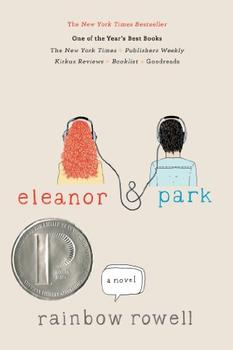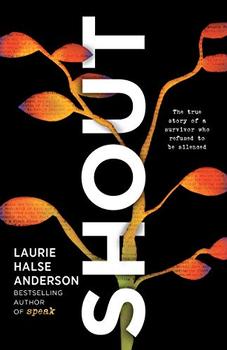Summary | Excerpt | Reading Guide | Reviews | Beyond the book | Read-Alikes | Genres & Themes | Author Bio

Chris Beam's poignant novel about a teenager's struggle for identity, approval, and self-acceptance is a welcome addition to the relatively small genre of novels featuring a transgender youth as the main character. Her story of events during several months in the life of 17-year-old J - female by birth, but with the unquestionable knowledge that his body should have been male - fictionalizes many of the trials faced by real young people who are already navigating the social quagmire of high school, the angst and rebellion of the teenage years, and who must also deal with the confusion and isolation of knowing that their physical gender and gender identity do not match. Without lecturing, criticizing, or patronizing, Beam uses the fictional J's story to, as she puts it, "portray the history, culture, and challenges in the young, urban trans community." Beam does this admirably, and although she proves to be more skilled as an advocate than as a storyteller, her novel still deserves recognition for its ability to call attention to an often overlooked and misunderstood segment of our young population.
"J" (short for Jennifer), was born into a female body, but for as long as he can remember, every feeling and experience has confirmed to his satisfaction that he is a boy. While having the wrong body was easier to ignore when he was young, puberty made life a nightmare for J, who has learned to thickly layer clothes and jackets even in the summertime. Living with his parents in a one-bedroom apartment has not given J many opportunities for privacy, and both dressing and shopping for clothes are painful. Looking into a mirror reminds J of how feminine his body looks, in spite of what his brain tells him. J's fondest wish is to begin taking testosterone shots, or "T." But after working up the courage to go to a clinic, he learns to his dismay that he must first get parental permission (at least until he is 18 in a few months), and go through at least three months of private counseling and evaluation before reassignment procedures can begin, a veritable lifetime to J.
In the meantime, J's relationships with his family and his only close friend are in disarray, and he is only able to find solace with those who do not know him well. He finds it nearly impossible to admit to his mother what is going on, finally thrusting a handout from the clinic at her and burying his head. And his father seems even less approachable. Through his mother's machinations, J winds up living out his last months of high school at the home of his best friend, Melissa. J has romantic feelings for Melissa, but she does not understand J's assertion that he is a boy, and not a lesbian. An ill-advised kiss on Melissa's lips while she is sleeping nearly severs their friendship. Frustrated, J works even harder at appearing physically male by observing the way men walk, talk, and hold their cigarettes, among other things. After J starts binding his breasts under his clothes and putting his male mannerisms into practice, he meets and makes friends with a girl from another school who does not know J's assigned gender. To J's delight and wonder, Blue sees him as he wants to be seen, as he feels he really is.
The thrill of being recognized as male is a critical occurrence for J, but I believe the real turning point comes after he transfers to an alternative school for gay, lesbian, bisexual and transgender youth—or as J says, "a special high school for queer kids." He doesn't personally appreciate what he perceives as the Kum Ba Ya, "I'm okay-you're okay" pretense of the school, which is decorated "like a rainbow that threw up on itself." But there he is able to make new friends and mentors who help him to find his path and gain a modicum of confidence.
For some time Cris Beam has been dedicated to helping transgender kids, particularly those who have been rejected by family and peers, and have nowhere to turn; but her inexperience as a novelist does show at times. There is very little narrative arc to the story, which covers less than a year of J's life and feels more like a snapshot than a journey; J is not much different at the end of the book than at its beginning. Beam also has difficulty combining a fictional treatment with the advice and wisdom she so clearly wants to give. As a result, J's voice has a tendency to suddenly shift from that of a confused teen who mistrusts "fancy words" to that of omnipotent narrator and experienced writer (Beam holds an MFA in non-fiction writing).
In spite of the novel's flaws, the characters are its strength. None of them are perfect; instead they are strong, believable, and naturally complex. This is a tale of human proportions, about imperfect people doing the best they can in a world sufficiently flawed that boys can sometimes be born into female bodies, and vice-versa. But at the end of the novel, one is left with a sense of hope, because although J's difficulties are not over, and the loose ends are not all neatly tied into a ribbon, he has at least started on the path toward becoming the person he wants to be, and you can feel his joy.
![]() This review was originally published in The BookBrowse Review in April 2011, and has been updated for the
November 2012 edition.
Click here to go to this issue.
This review was originally published in The BookBrowse Review in April 2011, and has been updated for the
November 2012 edition.
Click here to go to this issue.

If you liked I Am J, try these:

by Rainbow Rowell
Published 2020
Set over the course of one school year in 1986, this is the story of two star-crossed misfits - smart enough to know that first love almost never lasts, but brave and desperate enough to try. When Eleanor meets Park, you'll remember your own first love - and just how hard it pulled you under.

by Laurie Halse Anderson
Published 2020
A searing poetic memoir and call to action from the bestselling and award-winning author of Speak, Laurie Halse Anderson!
Your guide toexceptional books
BookBrowse seeks out and recommends the best in contemporary fiction and nonfiction—books that not only engage and entertain but also deepen our understanding of ourselves and the world around us.